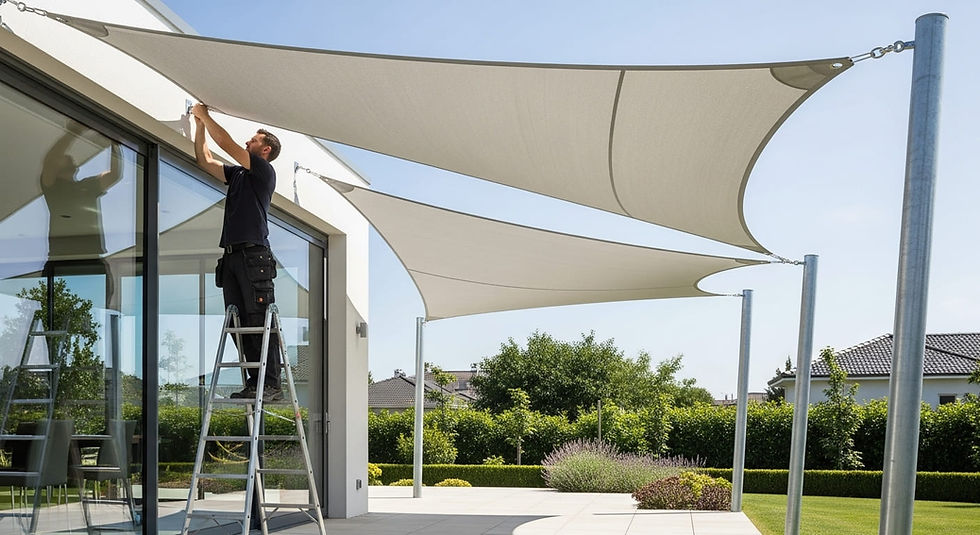Saving Water and Energy: Eco-Friendly Practices from a Plumber's Perspective
- Mike Warner
- Apr 11, 2024
- 4 min read
Updated: Feb 10
As we stand on the frontier of a worldwide emphasis on sustainability, one question remains paramount: how do we save our planet from the destructive habits of our past? It's a question that spans multiple disciplines and industries, yet today we're zeroing in on one vital field - plumbing. An array of eco-friendly improvements and innovative solutions are coming from this seemingly unsuspecting area, and they're set to make a big impact. This post will delve into the gritty details of eco-friendly plumbing practices and how they contribute to conserving water and energy in our homes.
Conventional wisdom might not draw a direct line between plumbing and sustainability, but maybe it's time we rethink that. After all, our bathrooms and kitchens are by far the greatest water consumers in our homes. So, what if our pipes and faucets could be a force for good, drastically reducing our water and energy use?
We’ve interviewed top plumbers and plumbing industry experts to bring you a comprehensive guide to eco-friendly practices. Exploring both the benefits and potential drawbacks of these approaches, we aim to equip homeowners with the knowledge they need to make informed, green choices.

Understanding the Eco-Plumbing Revolution
The first step into understanding eco-plumbing revolves around distinguishing which running water outlets in our homes are the biggest culprits of water wastage. This necessary knowledge can help direct our focus on where improvements can be most impactful. Showers, sinks, and toilets top the list, and the great news is that there are eco-friendly solutions readily available for each of these outlets.
Ever heard of low-flow showerheads? How about dual-flush toilets or aerator taps? All these are green plumbing alternatives that can drastically reduce your home’s water and energy consumption. But perhaps you're wondering how effective they really are, or how they compare to traditional plumbing fixtures. Stay with us as we dive deeper into these intriguing devices and their marked benefits.
The Power of Low-flow Showerheads
Low-flow showerheads are made to spew out water at a lower rate compared to conventional options, which reduces water usage tremendously. Modern low-flow designs also ensure that water pressure is not compromised - you can still enjoy your strong morning shower while using considerably less water.
However, these fixtures are more than just water-savers; they are also effective in reducing energy costs. This makes sense because the less water you need to heat for your shower, the less energy you’ll use. It's an ingenious method of conserving two resources at once! Now, let's explore some potential cons to help you decide if this eco-solution is right for your household.
Dual-Flush toilets: A Game Changer?
Another major player in the green plumbing revolution is the dual-flush toilet. Offering two flushing options - one for liquid waste and another for solid waste - it allows you to decide how much water is required after each bathroom use.
More traditional options use on average 13.6 litres of water per flush while dual-flush models can use as little as 3 litres, which clearly has a massive water-saving potential. But despite these benefits, traditional toilets still dominate most homes because of their lower upfront cost. Let's explore this further.
Aerator Taps: Small Changes, Big Results
Aerator taps, though often overlooked, offer a simple but effective way to conserve water. Essentially, these devices add air to the water, which helps reduce the amount of water flowing out of the tap without compromising on pressure.
It’s an eco-solution that has the potential to cut your water consumption in half. Yet, it could be argued that this solution does not address other water usage problems like over-flushing or excessive shower time—and it has limitations in water savings compared to other green plumbing options.
Cost Implications of Going Green with Plumbing
Whether you’re opting for low-flow fixtures, dual-flush toilets or aerator taps, the upfront cost is likely to be higher when you compare these options to conventional fixtures. However, the overriding message from eco-plumbers and industry experts is that these fixtures will actually save you money in the long run.
The initial investment should be offset by lower water and energy bills. Additionally, opting for eco-friendly plumbing fixtures could help to increase your property value, as more buyers are now prioritising sustainability in their house hunting.

Conclusion
As we shift towards a more sustainable future, our homes' plumbing is an area that can no longer be overlooked. The eco-plumbing revolution is set to play a significant role in conserving water and energy, ushering us into an era of mindful and simplified living that doesn’t cost the earth—literally.
Yes, the upfront costs might be higher, the designs might be different, and adapting could call for a readjustment. However, the long-term rewards seem unwavering: more pennies in your pocket, a smaller carbon footprint, and the satisfaction of knowing you're playing your part.
Even with the occasional drawback, the eco-plumbing practice is loud and clear: It’s time we embraced a more sustainable way of living. Yes, change is hard, but it's necessary—and after all, don’t we owe it to the patroness of all life, Mother Earth?



















Comments